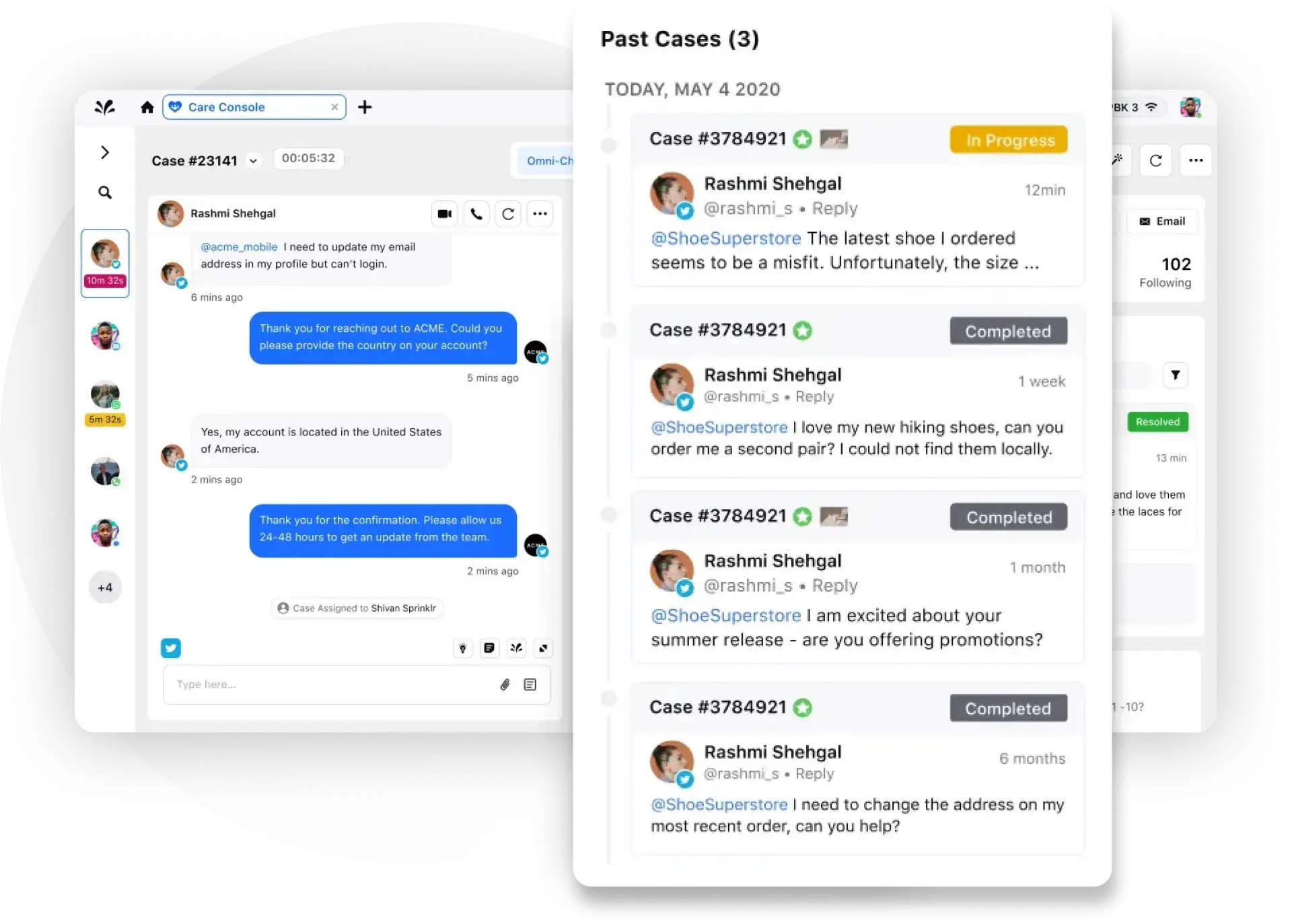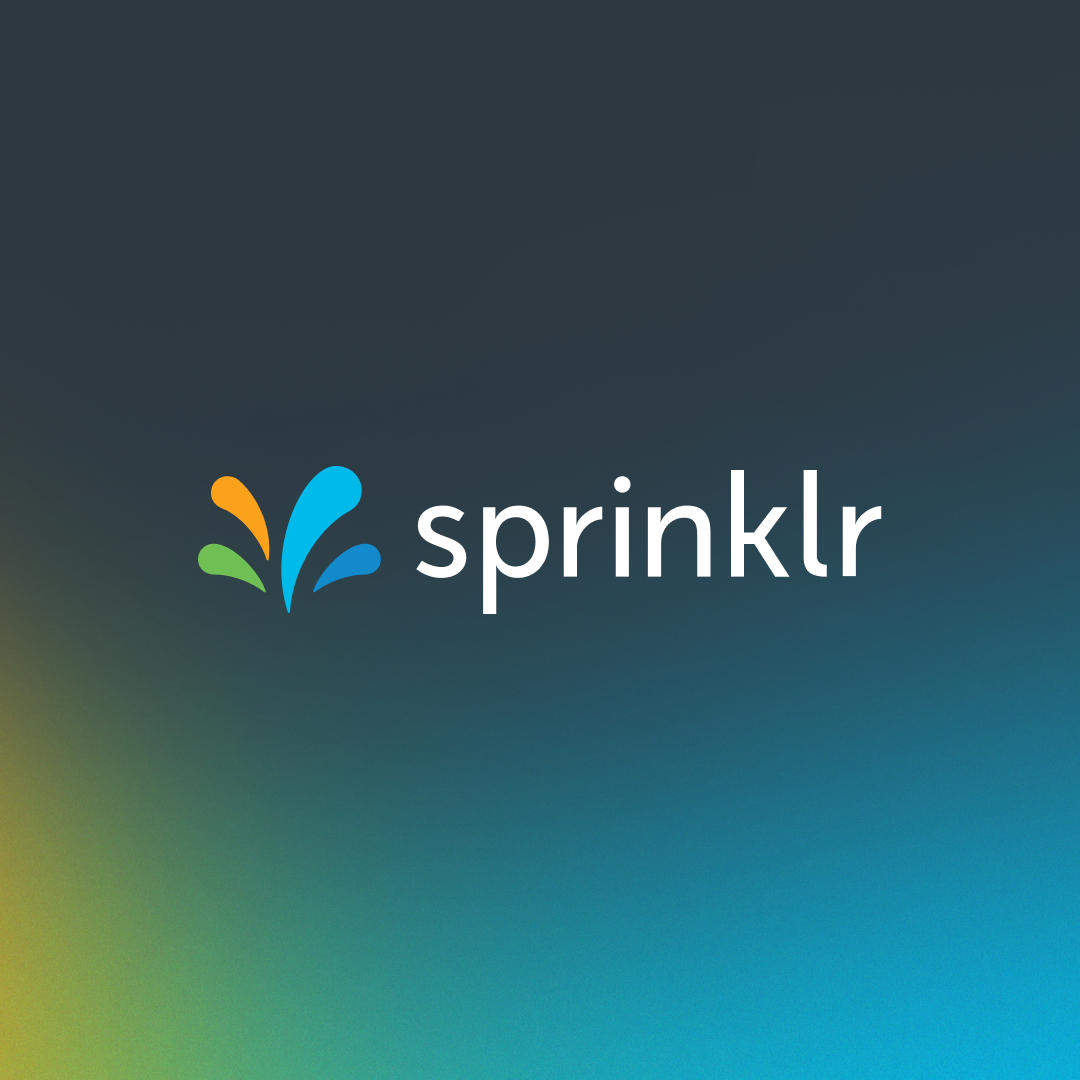The next generation of CCaaS is here
Digital-first customer service, enterprise-scale voice support. Redefine customer service with an AI-powered platform that unifies voice, digital and social channels. Power channel-less interactions and seamless resolution no matter the channel of contact.

Customer Orientation: An 8-Step Guide (+ Examples)
Ever feel like getting stuck in customer service purgatory, like Tom Hanks in 'The Terminal'? Endless hold music, automated messages that don't understand your issue – it's enough to make anyone scream, 'I LOST A FLIGHT!'
In the Steven Spielberg directorial, the airport authority's lack of customer orientation turned a simple travel delay into an unforgettable story (and a movie!). This highlights the importance of prioritizing customer needs.
Today, almost every business claims to be "customer-first." However, the true differentiator lies in a genuine customer orientation mindset that permeates every interaction throughout the customer journey.
So, how do you make your business truly customer-oriented? While it's not rocket science, it does require dedication and a commitment to continuous improvement. Don't worry, we've got your back!
In this blog, we'll unpack the essence of customer orientation, explore actionable steps to achieve it and share some pro tips to keep your customer-centricity initiatives solid. Let's roll up our sleeves and dive in!
What is customer orientation
Customer orientation is aligning your business to meet customer needs and requirements. It started as a reaction to modern consumer psychology, where experiences outweigh products.
Here's a breakdown of what customer orientation means:
- Understanding your customers: This involves managing customer feedback, analyzing customer behavior and identifying their pain points.
- Meeting their needs: By understanding your customers, you can tailor your products, services and communication to directly address their needs.
- Building relationships: It's not just about the sale. Customer orientation fosters long-term relationships with your customers through trust and positive experiences.
- Exceeding expectations: Going the extra mile to surprise and delight your customers can create loyal brand advocates.
Difference between customer-centricity and customer orientation
The terms customer-centricity and customer orientation are often used interchangeably, but they are not the same:
- Customer-centricity is a business approach that builds long-term customer relationships by integrating their feedback and enhancing their overall experience. It aims to create a company-wide culture that prioritizes the customer in every aspect of the business.
- Customer orientation focuses on meeting immediate customer needs through specific interactions and process-driven adjustments. It aims to ensure customer satisfaction at each touchpoint, often through tactical and practical methods.
Aspect | Customer centricity | Customer orientation |
Focus | Focuses on long-term relationship building, such as creating loyalty programs to retain customers for years | Meets immediate customer needs, like offering quick problem resolution and responsive support |
Approach | Offers a holistic view; integrates customer feedback through customer surveys and direct feedback to shape overall strategy | Is tactical; focuses on specific interactions like personalized emails and targeted promotions. |
Goal | Enhances overall customer experience by consistently improving products and services based on feedback | Ensures customer satisfaction at each touchpoint, such as during purchase, support and follow-up |
Strategy | Aims for a company-wide culture shift, such as Apple's focus on user-friendly design and innovation | Focuses on process-driven adjustments, like Amazon's use of real-time data to improve shipping and delivery. |
Example | Implementing a loyalty program, such as Starbucks Rewards, which increases customer retention and sales | Providing a self-service guide, like the one on Microsoft's website, which helps users solve issues quickly and reduces support calls |
🔍 Related Reading: 7 steps to develop a customer-centric strategy
Benefits of customer orientation
Now that we've unpacked the core principles of customer orientation, let's explore the tangible benefits it offers your business.
- Enhanced customer satisfaction
One of the most direct benefits of customer orientation is enhanced customer satisfaction. You focus on exceeding their expectations by consistently addressing customer needs and personalizing their experiences.
Zappos, for example, offers exceptional customer service by allowing returns up to a year after purchase. Satisfied customers are more likely to leave positive reviews, recommend your brand and remain loyal.
- Improved brand reputation
A strong customer-orientation mindset directly impacts your brand reputation. When customers feel heard, valued and well-supported, they're more likely to share positive experiences with friends and family. This positive word-of-mouth marketing boosts your brand reputation management initiatives and strengthens your credibility in the marketplace.
Additionally, prioritizing user-friendly design and superior customer service, like Apple, fosters brand loyalty and empowers customers to become vocal advocates. Research also suggests that 64% of buyers who feel a strong connection with a brand are ready to pay a premium price for its products and services.
- Increased customer loyalty
Building a loyal customer base is key to sustained growth; customer orientation helps achieve this. When customers feel valued, they become loyal. Loyalty programs like Starbucks Rewards, with their personalized offers and experiences, are a testament to the power of customer-centricity in fostering repeat business and building strong customer connections.
- Drives business growth
Customer orientation drives growth by creating satisfied, loyal customers who are more likely to promote your brand. This positive advocacy translates into a higher net promoter score (NPS).
Consider Netflix. Their personalized content recommendations ensure users discover content they enjoy, keeping them subscribed and recommending the service to others. This cycle of satisfaction, loyalty and advocacy fuels sustainable business growth.
Bonus Read: How To Turn Your Customers Into A Community Of Brand Advocates
Important skills to be customer-oriented
Customer orientation is more of a mindset than a process. To bring it to fruition, your organization must foster the right skills among your contact center agents and employees. Let’s explore these essential skills:
Empathy
Empathy helps connect with customers personally, making them feel valued and understood. Imagine a customer support agent who listens attentively to an angry customer and acknowledges their feelings. This simple act can defuse tense situations and turn a negative experience into a positive one.
Customer: "I'm really upset because my package was supposed to arrive yesterday, but it's still not here."
❌ Agent: “Your package is delayed. There's nothing I can do right now. You'll have to wait.”
✅ Agent: "I’m sorry to hear that." I understand how frustrating this must be for you. Let me check on the status and see what we can do to get it to you as soon as possible."
Active Listening
Active listening involves paying full attention to customers to accurately understand their needs. Picture an agent who, instead of interrupting, allows the customer to speak and then repeats what they’ve heard to confirm understanding. This reflects customer focus and ensures concerns are addressed accurately.
Communication
Clear and effective communication is key. It helps convey information precisely, resolve issues swiftly and build trust. Consider training your support representatives to break down complex processes into simple, understandable terms. This not only builds customer confidence but also ensures they feel supported.
Problem-solving
Effective problem-solving enhances the customer experience by showing you value their time and are committed to meeting their needs. Think of an agent who quickly identifies a solution to a technical glitch and guides the customer through the resolution steps smoothly. This demonstrates competence and dedication.
Adaptability
Adaptability means adjusting to different customer needs and situations and providing personalized solutions. Imagine modifying your approach based on the customer’s technical knowledge. For example, your support agent might offer a detailed step-by-step guide to a novice or a quick fix for a tech-savvy user.
Look at Shep Hyken’s take on how adaptability in customer service can create powerful customer experiences.
Patience
Patience is essential when handling customer inquiries and complaints. It allows you to manage difficult situations calmly and achieve positive outcomes. Envision an agent who listens patiently to a lengthy customer complaint and addresses each concern thoroughly. This level of patience can significantly enhance customer satisfaction.
Product Knowledge
In-depth product knowledge enables you to provide accurate information and helpful solutions. Imagine how delightful the experience would be when a support agent quickly offers detailed insights about product features and troubleshoots issues effectively. This not only showcases expertise but also instills confidence in the customer.
How Sprinklr AI helps
With customers expecting rapid responses and call volumes growing, personalized and empathetic conversations can sometimes take a back seat, leading to a more transactional approach to customer service. Sound familiar? Here's how to counter this.
Sprinklr's AI-powered agent assist software is designed to bolster live agents during calls and chats, ensuring their focus remains on building customer connections while resolving issues.
Agent assist software automatically recommends similar resolved cases, relevant knowledge base articles and guided workflows based on the context of the conversation. This enables agents to resolve customer queries 50% faster while still engaging with customers empathetically, ultimately elevating the overall customer experience.


How to implement customer orientation
To better relate to and understand customers, try visualizing the following in the context of your business.
Step 1: Define customer-centric values
Begin by defining customer orientation for your organization. Establish the core pillars of customer service and principles that emphasize customer satisfaction and make them a central part of your company culture. Communicate these values clearly across all levels of the organization to ensure everyone is on the same page.
Need inspiration? Check out companies like Ritz-Carlton, renowned for their exceptional customer service values. Their 12 service principles can be a great starting point!
Step 2: Understand your customer
Now that you've laid the groundwork, it's time to understand your customers truly. Knowing your customers is key to providing excellent service and products that meet their needs. Here's how to go about it:
📝 Conduct surveys and collect feedback: Conduct surveys regularly to gauge customer satisfaction and gather feedback. This will give you direct insights into what your customers think and feel about your products and services.
📊 Segment your customers: Segment your customers based on demographics, behavior and preferences. This will help you understand different customer groups and tailor your services to meet their specific needs.
👥 Leverage trend analysis and create personas: Use trend analysis methods to identify patterns and trends in customer behavior. Create detailed customer personas to represent different segments of your customer base. This will help you understand the frequency and nature of customer issues across various personas.
🔍 Identify pain points: For instance, if feedback reveals that many new customers are struggling to set up a key feature, it's a sign that the setup process needs improvement. Identifying these pain points allows you to address them proactively.
🎧Use social listening tools: Leverage social listening tools to monitor what your customers say on social channels. This can provide valuable insights into customer sentiment, whether positive or negative. Sometimes, understanding the overall vibe among your customer base can lead to improvements you never realized were needed.
By thoroughly understanding your customers, you can create more targeted and practical strategies to enhance their experience and meet their needs more effectively.
Step 3: Set orientation goals
Define clear, achievable goals for your customer-orientation efforts. Discuss strategy with key stakeholders, such as department heads, customer service managers and marketing leads, and leverage customer feedback.
These customer service goals should align with your overall business objectives. They should be specific, measurable, attainable, relevant and time-bound (SMART). For example, your business goal could be to improve customer satisfaction scores by 10% within six months to enhance customer loyalty. Setting such goals helps you stay focused and measure your progress.
Step 4: Recruit the right people
It's all about the people you hire (we know it sounds cliché?). If you genuinely believe in the power of customer orientation, you need to get your talent acquisition department on the same page as you. Tell them you need team members with a positive attitude and a genuine desire to provide excellent service. They should be the kind of people who go the extra mile to make customers smile, offering unexpected yet logical solutions or remembering a customer's preferences.
On that note, here's what the ideal workforce of a customer-oriented company looks like:
🤴Customer champions: Look for individuals who are naturally customer-focused and passionate about making others feel good. They should be empathetic listeners who can put themselves in customers' shoes and understand their frustrations. Learn how to show empathy in customer service.
🤵 Communication rockstars: Excellent communication skills are key! Your customer service crew must be clear, concise and friendly in all interactions, ensuring customers feel heard and understood.
👷 Problem-solving prodigies: Life at the pool isn't always sunshine and rainbows. Recruit individuals who tackle customer issues head-on, whether technical glitches or complex complaints.
🎤 Unpopular Opinion
Customer orientation thrives on empowered agents, not robots following scripts. Micromanagement creates robotic interactions, while clear boundaries and autonomy unlock creative problem-solving. The real power of customer service autonomy lies there.
Trust agents to navigate within defined boundaries and go the extra mile for customers. Even well-intentioned decisions can have unintended consequences, but blaming agents fosters fear, not solutions. Embrace learning opportunities and empower agents – they'll become your customer champions, building trust and loyalty, the cornerstones of a genuinely customer-oriented business.
Don't you agree?
Step 5: Empower employees through training and tools
Provide employees with thorough and regular training, including tailored onboarding sessions, role-playing exercises and continuous education. Contact center training should cover effective and empathetic communication and conflict resolution skills.
In addition, ensuring employees are versed in the existing tech stack is equally essential. Equip your team with in-depth product knowledge so that they become experts on product features, benefits and troubleshooting common issues. Moreover, train them on the customer service workflow and, most importantly, the contact center CRM system so that they can confidently provide solutions across calls and live chat.
Two Cents from Sprinklr
Document and share: Encourage agents to document unique customer service scenarios. Discussing these scenarios during coaching and feedback sessions allows everyone to learn and grow.
Recognize and reward: Shine a spotlight on agents who go the extra mile for customers! Public recognition and rewards (like a fancy family lunch or tickets to a show) boost morale and motivate others to excel, making everyone feel appreciated and motivated.
Step 6: Receive and act on feedback
Collect customer feedback regularly to understand their needs and experiences, such as their interactions with your product, customer service and overall satisfaction. Use surveys, social media and direct interactions such as follow-up calls or in-person meetings. This will help you gather consumer insights on common pain points and collect suggestions.
Analyzing this feedback helps identify areas for improvement, like streamlining the checkout process or enhancing product features and opportunities to enhance your services. Acting on this feedback shows customers that you value their opinions and are committed to improving their experience.
Automate customer feedback with Sprinklr
Transform how you capture and utilize customer feedback with Sprinklr’s omnichannel survey software. It enables you to track customer sentiments across over 30 digital and social channels, including voice interactions, all in one place.
Leverage AI-powered CSAT predictions to gain deeper insights into customer satisfaction and enhance your service delivery.
Additionally, Sprinklr allows you to seamlessly convert survey questions into interactive chatbot conversations, making it easier to gather valuable feedback. By deploying conversational surveys on popular messaging channels, you can significantly increase response rates and capture richer, more actionable customer insights.

Step 7: Personalize customer interactions
Tailor your interactions to meet each customer's unique needs. For example, adjust your communication style based on customer preferences, such as offering more technical details for knowledgeable customers and simple explanations for others.
Use data from previous interactions, purchase history and customer preferences to provide personalized service. When recommending products based on past purchases, ensure relevance and timeliness. Make personalized emails stand out by referencing the customer's name and past interactions or purchases.
Offer genuinely beneficial deals, such as discounts on frequently bought items or exclusive access to new products. Personalization makes customers feel valued and increases their satisfaction.
Step 8: Dive into the Data
You’ve built your dream team, trained and empowered them to be customer champions. But how do you know if you're truly winning at customer orientation? It's time to grab your floaties and dive into the data!
Track the metrics: Focus on the metrics that matter most – customer satisfaction scores (CSAT) and net promoter scores (NPS). Are your customers happy? Would they recommend your business to their friends and family? These scores give you a clear picture of customer sentiment.
Listen to the chatter: Numbers are important, but don't forget the power of social media! Use social listening software to track what customers say about your brand online. Are they raving about their experience or are there areas for improvement? This real-time feedback helps you identify areas to fine-tune your customer orientation strategy.
Step 9: Keep evolving
Schedule regular reviews to assess your customer service efforts. Are there areas where you can improve communication, streamline processes or offer more personalized service?
The world of customer service is constantly evolving. Stay informed about industry trends and best practices. What are your competitors doing? Are there new technologies or tools that can enhance your customer experience? By staying on top of the latest trends, you can ensure your customer service stays top-notch and becomes your most significant competitive advantage as you grow.
Customer orientation is impossible without a VoC program
Here’s how a voice of customer program can support your customer orientation efforts:
🔎 Pre-implementation
Before rolling out new strategies, use VoC programs to gain a deep understanding of customer pain points and unmet needs. This insight ensures that your strategies are based on customer feedback, setting a solid foundation for success.
🔧 During implementation
Continuously gather feedback to monitor the impact of your efforts on customers. This real-time feedback allows you to make necessary adjustments and improvements, ensuring that your customer orientation initiatives are on the right track.
🔭 Post-implementation
After implementing new strategies, VoC programs should be used to measure their effectiveness. Assess how well your efforts align with customer expectations and identify areas for further refinement to enhance overall customer satisfaction.
Integrating a VoC program into your customer orientation strategy creates a feedback loop that drives continuous improvement and ensures your initiatives truly resonate with your customers.
Achieving customer orientation with Sprinklr
Let's rewind a bit. Remember that one customer service experience that left you feeling like your voice wasn't heard? We've all been there. But here's the thing, your customers should never feel that way about your brand!
Today, customers expect personalized, empathetic interactions that resolve their issues quickly. However, many businesses struggle to meet these expectations due to outdated systems and limited insights.
Enter Sprinklr Service, a game-changing customer service software solution. Unlike traditional systems, Sprinklr's comprehensive suite is powered by AI, enabling you to not just understand but anticipate customer needs and consistently deliver exceptional service.
Imagine:
- Streamlined operations: Freeing your team to focus on building relationships by automating routine tasks.
- Enhanced personalization: Providing empathetic support tailored to each customer's unique needs.
- Improved responsiveness: AI-driven recommendations and omnichannel support ensure no query goes unanswered.
- Actionable insights: Continuously refine your strategies based on customer feedback and interaction data.
Don't let customer service challenges hold your business back. Schedule a demo with our experts this week and discover how AI can transform your approach to customer orientation!
Frequently Asked Questions
Customer orientation boosts customer loyalty by meeting their needs and exceeding expectations. When customers feel valued and understood, they are more likely to return and recommend your brand.
Essential skills for customer-oriented employees include empathy, active listening, clear communication, problem-solving, adaptability, patience and deep product knowledge.
You can enhance customer orientation with tools like CRM systems, AI chatbots and data analytics. These tools help track customer interactions, personalize experiences and quickly resolve issues.
Common mistakes include neglecting to update customer information, relying on generic responses, not integrating feedback and focusing on acquisition over delivering customer satisfaction. These errors can lead to poor customer experiences and reduced loyalty.
Customer data and feedback can be leveraged by analyzing trends, identifying pain points and personalizing interactions. Use surveys, social media and direct interactions to gather insights.



